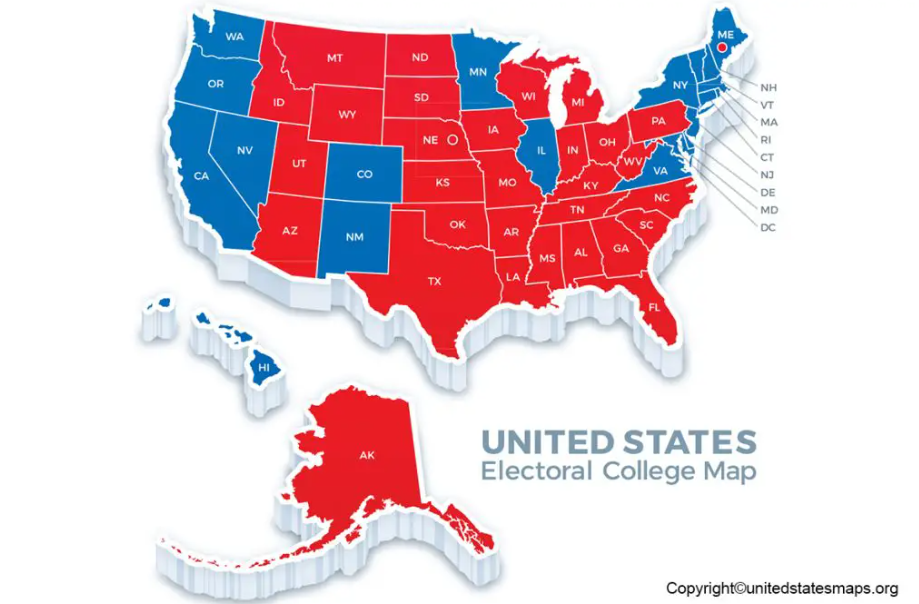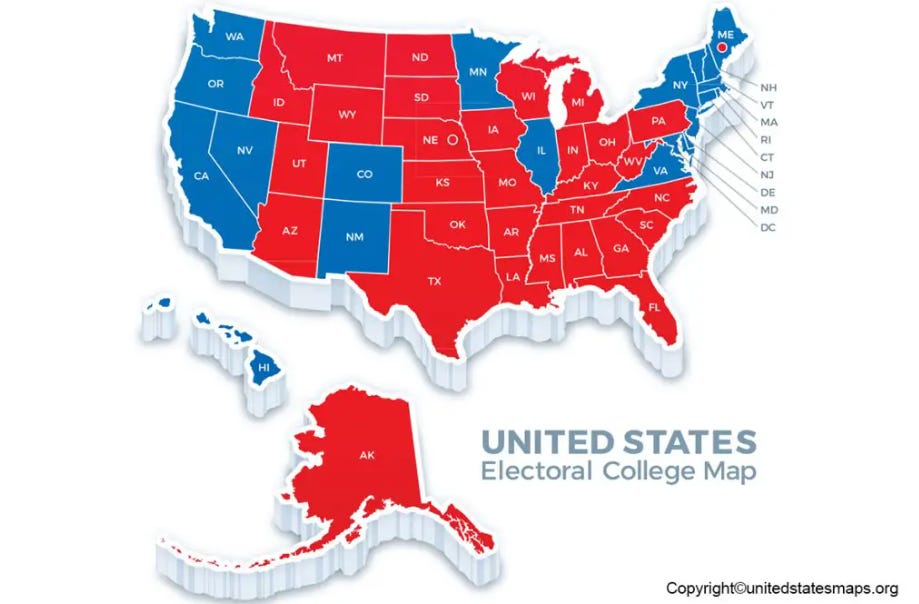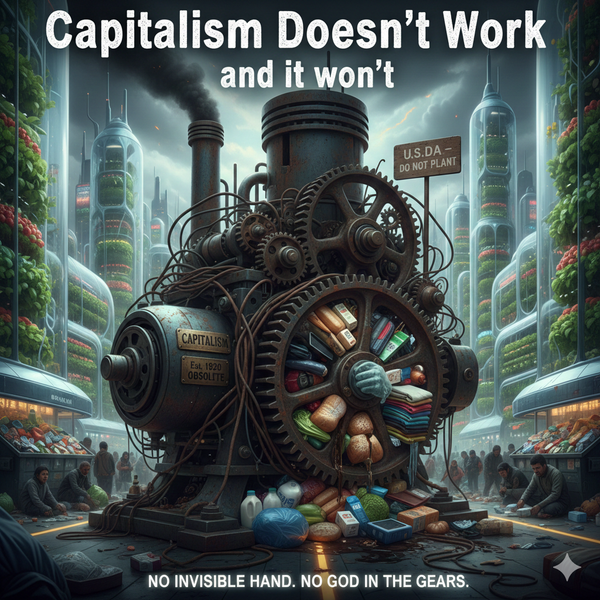Don’t Stop the Electoral College — Fix It

It was supposed to stop Trump, not crown him.

We’re not a democracy. Never were. The Founders didn’t trust regular people that much. They trusted landowners. Men of means. People like themselves. The idea of direct popular elections made them twitchy—and for good reason. They’d just pulled off a revolution and were now trying to keep the experiment from eating itself.
So, they built circuit breakers. Firewalls. Guardrails. The Senate. The courts. And, famously, the Electoral College.
The Electoral College wasn’t created to reflect the will of the people. It was created to restrain it. If the public lost its mind and decided to elect a dangerous lunatic, the College could—at least in theory—step in and say, “Yeah, no.” That was the idea. Slow things down. Inject some judgment into the process.
Then came 2016.
Donald Trump lost the popular vote by nearly three million. And the Electoral College handed him the presidency anyway. The firewall didn’t just fail—it shorted out and set the house on fire.
And ever since, we’ve heard the same rallying cry:
“Abolish the Electoral College!”
Emotionally, it makes sense. But strategically, it’s a dead end. Abolishing the Electoral College would require a constitutional amendment—meaning thirty-eight states would have to agree to give up their power. That includes tiny states like Wyoming and big ones like Florida that enjoy their outsize influence under the current setup. They’re not going to vote themselves into irrelevance. Not now, not ever.
So, if you want to scream “abolish it” into the void, go ahead. But don’t mistake it for a plan.
Here’s a better one: fix it.
Because the Electoral College wasn’t always a disaster. The original idea wasn’t bad though not democratic. It just got hijacked.
It was meant to be a circuit breaker. A check on demagoguery. A filter for competence. But over time we turned it into a party loyalty test. Electors became rubber stamps. States adopted winner-take-all rules that made swing states kings and the rest of us scenery. And the Electoral College, this supposedly thoughtful failsafe, turned into a slot machine with the fate of the republic riding on a few counties in Pennsylvania.
But it doesn’t have to stay broken.
There’s already a fix on the table:
The National Popular Vote Interstate Compact.
Here’s how it works. States pass laws agreeing to give all their electoral votes to the winner of the national popular vote—but only once enough states have joined to hit 270. That’s the number needed to win the presidency. No constitutional amendment needed. Just math and cooperation.
Seventeen states and D.C. have already signed on. That adds up to 209 electoral votes. Just sixty-one short of turning the entire system inside out—peacefully, legally, and permanently.
This isn’t a pipe dream. It’s already moving.
But we should also be clear-eyed about why this matters. The problem with the Electoral College isn’t just about fairness—it’s about survival.
In 2020, Joe Biden won the popular vote by more than 7 million. But if just 44,000 votes in Georgia, Arizona, and Wisconsin had flipped, Trump would’ve had a second term. That’s how fragile the system is. A few thousand votes in a few hand-picked states, and suddenly we’re back to chaos.
And if Trump runs for president again in 2028—or if someone just like him does—it’ll be through the same structural backdoor. That should terrify anyone with a memory longer than an Instagram reel.
So no, we don’t need to blow up the Constitution. We don’t need to invent a new country from scratch. We just need to fix the parts that are no longer doing the job they were built to do.
The Electoral College was designed to protect the republic from charismatic con men and popular tyrants. It was supposed to be a failsafe, not a launchpad. It failed in 2016 because we let it. We gave it over to party hacks and partisan gamesmanship. We treated it like a prize instead of a safeguard.
But the bones of the idea are still useful. We can repurpose it. We can return it to something that actually serves the public good instead of undermining it.
And yes—fixing the Electoral College means we’ll finally have to explain it.
Which means people will finally understand it.
And when they do? They’ll be stunned. Outraged, even.
They’ll learn that we’ve never been a true democracy. That your vote counts more if you live in Wyoming than if you live in California. That five times in American history, the loser of the popular vote became president. That we still use a system built in the 1700s to calm the nerves of slave states.
And maybe that’s exactly what we need. A national moment of “Wait… what the hell?”
Because the more people understand the system, the harder it’ll be to keep pretending it’s fine. And the closer we’ll get to actually fixing it.
So don’t fear the backlash. Use it. Let the anger work.
Fix the system.
Explain the fix.
Watch the country wake up.
And if that means we stop calling ourselves a democracy and start building something closer to one—good.
It’s about time.
If this lighted something in you, share it.
With one person who still thinks their vote counts the same in Wyoming and California.
With one person who says “we’re a democracy” like it’s true.
And with one person who insists the system can’t be fixed—because they’re wrong.
The Electoral College didn’t break overnight.
It can be rebuilt.





